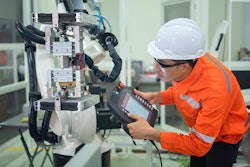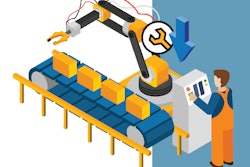The results of the 2022 edition of the annual IoPP Salary Survey are in, and the responses map quite well to the existing packaging workforce milieu and “Great Resignation.” Labor is scarce and hard to retain—that set of circumstances precipitates a wide range of trends.
The biggest takeaway is that the balance of power has shifted away from the employer and toward the employee. One illustration of this can be found in the write-in answers on page 48. When asked what keeps them up at night regarding job security, 23% of respondents said “Nothing,” an unprompted, specific answer that’s reinforced by 84% of respondents telling us they are somewhat or very secure when asked about job security in a multiple-choice question.
Another 9%—again, without any prompting—said “Job Satisfaction” keeps them up at night. If labor were copious and cheap, job satisfaction would be a mere confection, a nice-to-have luxury. But 1 in 10 of the respondents to this survey say job satisfaction is a factor in whether they will stay loyal to their employer. This shows that companies aren’t just competing on salary for labor. They’re also competing on intangibles like job satisfaction, meaning, purpose, and doing good for the world. My PMMI Media Group colleague Sean Riley recorded a recent podcast on this phenomenon, with his workforce expert guest Dr. Jessica Kriegel telling him, “there is a war on talent, and the talent won.”
In this environment, employees are aware of their worth. We’ve seen two years of respondents weathering pandemic-wrought uncertainty by exhibiting a “staying put, hunkering down” behavior, leaning on reliable existing employment, and avoiding the risk of the unknown—in other words, preferring the devil they know vs. the devil they don’t. But in this year’s results, we’re seeing a shift toward new job-seeking and greater risk-taking. In fact, 19% of respondents voluntarily changed employers last year, up from 11% the previous year. Also, loyalty remains high, but slightly more respondents are likely to seek new employment in the coming year (32% now vs. 30% last year), and slightly fewer plan to stay put (53% now vs. 55% last year).
This increased mobility among employees is forcing employers to up the stakes to retain them. The overall average salary reported by the respondents went up to $130,070, up 7% from last year and an all-time high in PW’s reporting on the survey. But the dollar figures aren’t just going up evenly across the spectrum of age and experience. Employers are using a strategy of rewarding promising newer and younger employees with bigger, earlier salary jumps, hoping to lock them in.
It always has been the case (and still is) that the oldest, most experienced, most educated people command the highest salaries. But the fastest pace of salary change by percentage gained is becoming more concentrated in the upwardly mobile youngest age cohorts, and among the least experienced respondents. Over the past few years, IoPP’s Jane Chase and I have often cited “after about the five-year mark” as the experience benchmark after which employees can expect to see the biggest salary gains. That’s changed; the biggest jump, one of 23%, is now reported to happen after 2 years of experience, headed into the 3- to 5-year experience cohort.
The youngest and least experienced respondents also are more likely than their older, more tenured peers to be confident about salary gains. This is true both in having received them in the past year, and in expecting to receive them the following year. These younger and less experienced folks are more secure in their jobs, too. The only pay category that appears to correlate more closely with older and more experienced respondents is confidence in bonuses, both in having received one last year, and in expecting one next year.
A disappointing finding in this year’s results was the persistent and growing gender-based wage gap, now up to 22% in favor of men from 17% last year. Much of this stems from the fact that female respondents were largely younger and less experienced than their male counterparts, and we know age and experience correlate with higher salaries. They also aren’t as frequently working as engineers or in corporate management, two higher earning job duties. But what’s unclear is how sticky, or how fixed, packaging’s overrepresentation of younger, less experienced women is. If today’s female respondents represent an up-and-coming age and experience cohort that is soon to make its way into the highest earning positions, then salaries should work themselves out. But if women in packaging stays static, in its current age and experience distribution (even with women being every bit as educated as men), then the gender-based wage gap will persist. PW



















